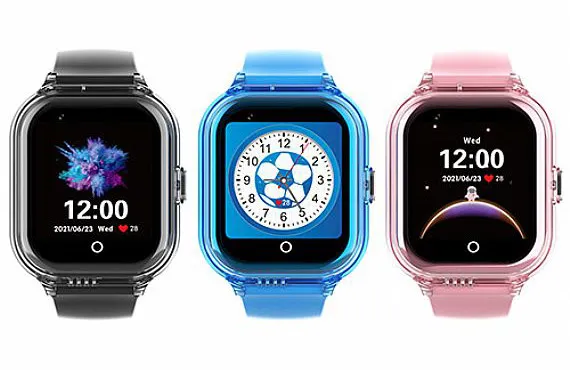After being awake from sleep, you will become increasingly tired throughout the day. This feeling will peak in the evening before bedtime. Adenosine levels may increase throughout the day, leading you to tiredness, and then the body will automatically break down this compound during sleep.

But sometimes, we face modern life that barely gives us time to stop and rest. It can make a good night's sleep regularly seem like a dream. With so many activities that can't be done in one day, it is very difficult to get sleep with good quality. Lacking quality sleep regularly increases the risk of many diseases and health problems. Lack of sleep will make a person weak and difficult to control emotions during activities during the day. So how do we know if we already have a healthy sleep cycle?
Smartwatch As Sleep Tracker
With the existing development, tracking the sleep cycle is not difficult as it seems. Not only are Bluetooth smartwatches, but now smartwatches can also be equipped with features that can support our health. One of them is a sleep tracker, where this feature not only monitors your sleep, it also allows you to get the best estimate of when you wake up when you sleep well, and when you wake up at night.
The easiest way to let your smartwatches know when you go to sleep and wake up is to monitor your movement when you are asleep. Many smartwatches have sensors built to detect motion, such as an accelerometer, which also measures the steps you take throughout the day. These sensors can detect small movements throughout the night to determine when you go to bed, the time you spend sleeping, and when you wake up. Motion sensors can also detect whether you've had a poor or restful sleep throughout the night and can sometimes tell you how many times you've woken up during the night too.
Some smartwatches use a heart rate sensor to monitor your heart rate. Your heart rate drops during sleep, and it also differs as you reach different stages in the sleep cycle. The tracker uses this data to estimate your beats per minute (BPM), heart rate variability (HRV) or resting heart rate (RHR). So these changes in data help your smartwatch closely track and monitor your sleep cycle. Developments in Smartwatches today even allow you to track the amount of oxygen in your blood, which can warn of sleep disorders like sleep apnea that affect breathing, depriving your body of oxygen and stopping you from getting the rest you need. This information helps the algorithm know when you tend to fall asleep or wake up and the stage of your sleep, whether it's light, deep, or REM.
Once we fall asleep, our body follows a sleep cycle in four stages. The beginning three stages are known as non-rapid eye movement (NREM) sleep, and the last stage of sleeping is known as rapid eye movement (REM) sleep.
During stage 1 of non-REM (NREM) sleep, your eyes move more slowly, your muscles relax, and then your heart rate, breathing, and eye movements start to slow down, as well as your brain waves, which are more active when you're awake. Your brain waves start to slow down. This first stage indicates the transition between wakefulness and sleep; it also consists of light sleep. Stage 1 usually lasts a few minutes.
As you enter stage 2 of light sleep, this second stage of NREM sleep is marked by deeper sleep as your breathing and heart rate continue to slow, and your muscles are more relaxed. Your eye movements will stop along with your body temperature will drop. Your brain waves continue to slow down, but they also experience different bursts of activity called sleep spindles and display a sleep structure called the K complex. According to most research, stage 2 is the longest of the four sleep stages.
During stage 3 sleep, known as deep or slow-wave sleep, your brain waves slow down into delta waves. This stage will take longer at first and decrease in duration throughout the night. This stage is important in making you feel refreshed and alert the next day. Heart rate, breathing, and brain wave activity all hit their lowest levels, and muscles were as relaxed as ever.
Finally, in REM sleep, your brain waves become active again, mimicking similar activity to when you were awake. The first REM stage will last about 90 minutes after falling asleep. Your eyes will move back and forth quickly under your eyelids. Your blood pressure, breathing rate, and heart rate will increase. Dreaming will usually occur during REM sleep, and your arms and legs will become paralyzed – it is believed this is meant to prevent you from physically acting on your dreams. Several studies have linked REM sleep with memory consolidation, converting newly learned experiences into long-term memories. The duration of the REM stage decreases with age, causing you to spend more time in the NREM stage.
These four stages will be repeated throughout the night until you are awake. For most people, the duration of each cycle will last about 90-120 minutes. NREM sleep makes up about 75% to 80% of each cycle.